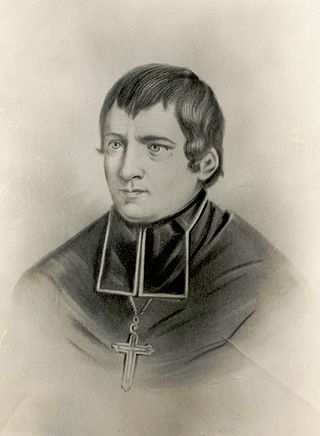
Étienne Jérôme Rouchouze SS.CC. was a French Catholic missionary in the Eastern Pacific.
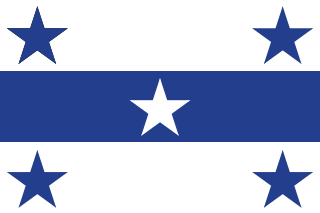
The Gambier Islands are an archipelago in French Polynesia, located at the southeast terminus of the Tuamotu archipelago. They cover an area of 27.8 km2 or 10.7 sq mi, and are made up of the Mangareva Islands, a group of high islands remnants of a caldera along with islets on the surrounding fringing reef, and the uninhabited Temoe atoll, which is located 45 km south-east of the Mangareva Islands. The Gambiers are generally considered a separate island group from Tuamotu both because their culture and language (Mangarevan) are much more closely related to those of the Marquesas Islands, and because, while the Tuamotus comprise several chains of coral atolls, the Mangareva Islands are of volcanic origin with central high islands.

Rikitea is a small town on Mangareva, which is part of the Gambier Islands in French Polynesia. A majority of the islanders live in Rikitea. The island was a protectorate of France in 1871 and was annexed in 1881.
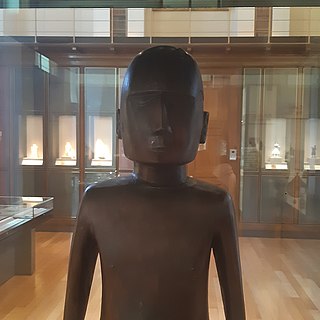
The Mangareva Statue or Deity Figure from Mangareva is a wooden sculpture of a male god that was made on the Pacific island of Mangareva in French Polynesia. The cult image was given to English missionaries in the early nineteenth century as the local population converted to Christianity. It was eventually bought by the British Museum in 1911.
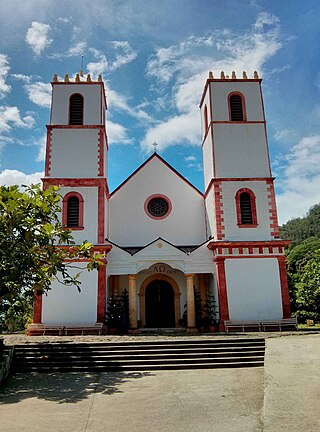
St. Michael's Cathedral, also known as the Rikitea Cathedral, is a parish of the Catholic Church located on Mangareva Island in the Gambier Islands of French Polynesia.
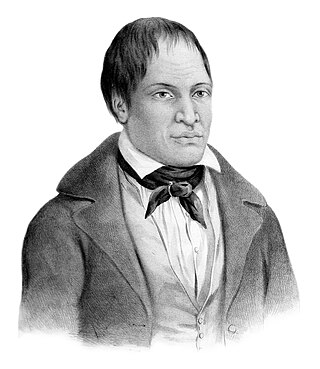
Te Maputeoa was a monarch of the Polynesian island of Mangareva and the other Gambier Islands. He was the King or ʻAkariki, as well as the penultimate king of the island of Mangareva, and other Gambier Islands including Akamaru, Aukena, Taravai and Temoe. He reigned from 1830 until his death in 1857.

Joseph Gregorio II was the last King or ʻAkariki of the island of Mangareva, and other Gambier Islands including Akamaru, Aukena, Taravai and Temoe. His short reign lasted from 1857 until his death in 1868. His childless death left the royal succession of Mangareva in doubt.
Maria Eutokia Toaputeitou was Queen consort of the island of Mangareva, and other Gambier Islands including Akamaru, Aukena, Taravai and Temoe. She served as regent for her son in his minority and for a short period afterward in the interregnum period when the royal succession of Mangareva was in doubt.

Honoré Laval, SS.CC., was a French Catholic priest of the Congregation of the Sacred Hearts of Jesus and Mary, a religious institute of the Roman Catholic Church, who evangelized the Gambier Islands.

François d'Assise Caret, SS.CC., was a French Catholic priest of the Congregation of the Sacred Hearts of Jesus and Mary, a religious institute of the Roman Catholic Church.
Cyprien Liausu, SS.CC., was a French Catholic priest of the Congregation of the Sacred Hearts of Jesus and Mary, a religious institute of the Roman Catholic Church. He headed the Roman Catholic mission in the Gambier Islands from 1835 to 1855.
Chrysostome Liausu, SS.CC., was a French Catholic priest of the Congregation of the Sacred Hearts of Jesus and Mary, a religious institute of the Roman Catholic Church. He helped start the Roman Catholic mission in the Eastern Oceania and was the Prefect Apostolic of Southern Oceania.
Gilbert Soulié, SS.CC., was a French Catholic Catechist brother of the Congregation of the Sacred Hearts of Jesus and Mary, a religious institute of the Roman Catholic Church. He was part of the Roman Catholic mission in the Gambier Islands from 1835 until his death in 1863 and with Brother Fabien Costes trained the natives workers and masons in the construction of many of the island's impressive buildings including St. Michael's Cathedral in Rikitea.
Fabien Costes, SS.CC., was a French Catholic Catechist brother of the Congregation of the Sacred Hearts of Jesus and Mary, a religious institute of the Roman Catholic Church. He was part of the Roman Catholic mission in the Gambier Islands from 1835 until his death in 1878 and with Brother Gilbert Soulié trained the natives workers and masons in the construction of many of the island's impressive buildings including St. Michael's Cathedral in Rikitea.
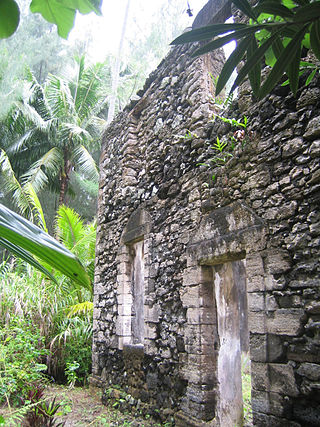
Urbain de Florit de La Tour de Clamouze, SS.CC., was a French nobleman and later lay brother of the Congregation of the Sacred Hearts of Jesus and Mary, a religious institute of the Roman Catholic Church. He was part of the Roman Catholic mission in the Gambier Islands from 1835 until his death in 1863. He founded and headed the Re'e Seminary College on Aukena, one of the earliest institution of higher learning in the South Pacific, where native Mangarevan boys were taught Latin and French as future clergymen. The young King Joseph Gregorio II was also educated at the College.
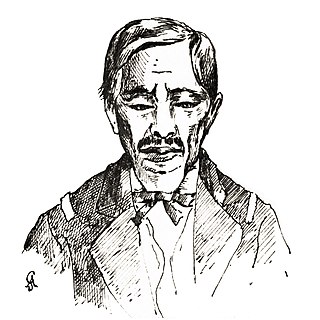
Bernardo Putairi was the Prince Regent of the island of Mangareva, and other Gambier Islands including Akamaru, Aukena, Taravai and Temoe from 1873 to 1881. He served as regent and de facto monarch during the interregnum period when the royal succession of Mangareva was in doubt and after the death of the last royal heir became the last monarch of the island kingdom. His name is often written Putaïri or Putairï in French sources.
Tiripone Mama Taira Putairi, SS.CC., (1846–1881) was educated by French missionaries from birth and became the first indigenous Roman Catholic priest ordained in Eastern Polynesia. He was part of the native royal family of Mangareva, and his father Bernardo Putairi was the island's last ruling regent.
Arone Teikatoara was the penultimate Prince Regent of the island of Mangareva, and other Gambier Islands including Akamaru, Aukena, Taravai and Temoe from 1869 to 1873. He served as regent and de facto monarch during the interregnum period when the royal succession of Mangareva was in doubt. His first name has also been spelled "Arona", "Aarona" or "Aarone".
Akakio Tematereikura was the Prince Regent of the Polynesian island of Mangareva and other territories of the Gambier Islands, including Akamaru, Aukena, Taravai and Temoe, in 1869. He served as regent and de facto monarch during the interregnum period when the royal succession of Mangareva was in doubt. His name is also written as Akakio Matereikura in some French sources.











